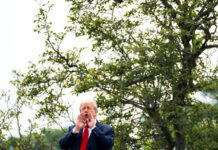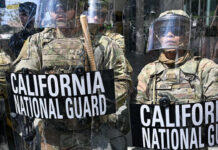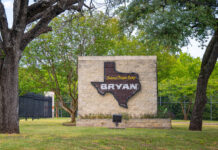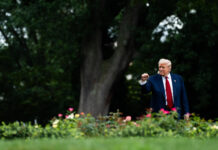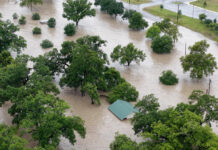NOVEMBER 24, 2020
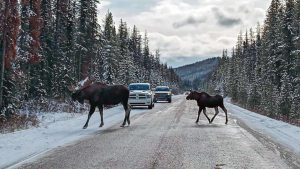
Moose crossing a road in Jasper National Park in Alberta, Canada. – Valerie Domaine/Parks Canada
Visitors at a Canadian national park were greeted with a rather unusual digital road sign this weekend: “Do not let moose lick your car.”
The sign caught the imagination of the internet and led to questions like:
“What happens if a moose licks your car?”
“Is it really that big of a problem?”
And, perhaps most salient: “Exactly how would you stop them?”
As it turns out, the signs were put up by officials of Jasper National Park, in the province of Alberta in Canada’s southwest, to try to stop moose from licking road salt off idling cars — a serious problem that can present dangers to the vehicles, the drivers and the moose.
Steve Young, a spokesman for the park, said in an interview on Monday that moose usually got their salt, a vital part of their diets, from salt licks — deposits of salt and minerals scattered throughout the park. But the animals discovered that they could get the mineral from cars splashed with road salt. (It has begun snowing in Jasper, and salt can help melt ice on roads.)
So the moose would wander onto the roads running through the 2.8 million-acre park, increasing the chances of cars hitting them and drivers getting injured or killed.
The warning was similar to park rangers’ trying to stop campers from leaving food at campgrounds lest it encourage bears to keep coming back to the site, Mr. Young said.
“If you find a restaurant you really like, do you go back to that restaurant again?” he said. “Yes, you do. That’s what wildlife do. They’ll go back; they’ll get habituated to it. They’re more likely to lick indiscriminately. If the opportunity isn’t there, they don’t learn that’s a way they can replenish their diet. So we’re trying to take that opportunity away.”
Collisions can do significant damage, Mr. Young added.
“When you have a car-moose collision, both sides lose,” he said. “You’re putting at least a 800-pound animal in the air. They’ll go through a windshield because of the way their legs are.”
The park has had an increase in human-wildlife encounters in recent years, according to Mr. Young. Drivers who pull over to take photos of or with animals exacerbate the issue.
“What we’re seeing more of is people are a little bolder with wildlife because of the selfie generation, Instagram — people get a little closer to wildlife than they should,” he said.
Mr. Young stressed that no matter which national park you’re visiting, it’s important to keep your distance from the animals. “The more space between you and the wildlife, the healthier it is for them and you,” he said.
It is illegal to feed or disturb any wildlife in a Canadian national park, and violators can face fines up to 25,000 Canadian dollars ($19,000).
The moose message is not the only double-take-worthy advice that Jasper National Park has given about human-animal relations in the past few days. Last week, the park tweeted to warn residents not to hang Christmas lights in open spaces so they won’t get tangled up in elk antlers.
Mr. Young explained that elk often wander into Jasper — a township with a population of just 4,600 located in the middle of 4,200 square miles of national park — to take shelter from predators like wolves. Their antlers could get caught up in Christmas lights strung at ground height.
As for the moose, motorists can stop them from licking their cars by staying out of licking range, according to a tweet by Jasper National Park: “Moose licks usually happen on cars stopped to view moose. Keep beyond moose-tongue distance by moving on before a moose approaches.”
How does Mr. Young define “moose-tongue distance”?
“I actually don’t know how long a moose tongue is,” he admitted. But the park’s guidelines for how far people should stay from animals is 30 meters, or 100 feet, he said.
He acknowledged that if you do find your car on the receiving end of a moose-licking, your options can be limited.
“As someone who’s had their car licked by a big-horned sheep, I realize there are limited options when you’re parked,” he said.
“We do understand that in some situations, patience might be your friend, and the safest thing you can do is to stay where you are.”
Courtesy/Source: NY Times







